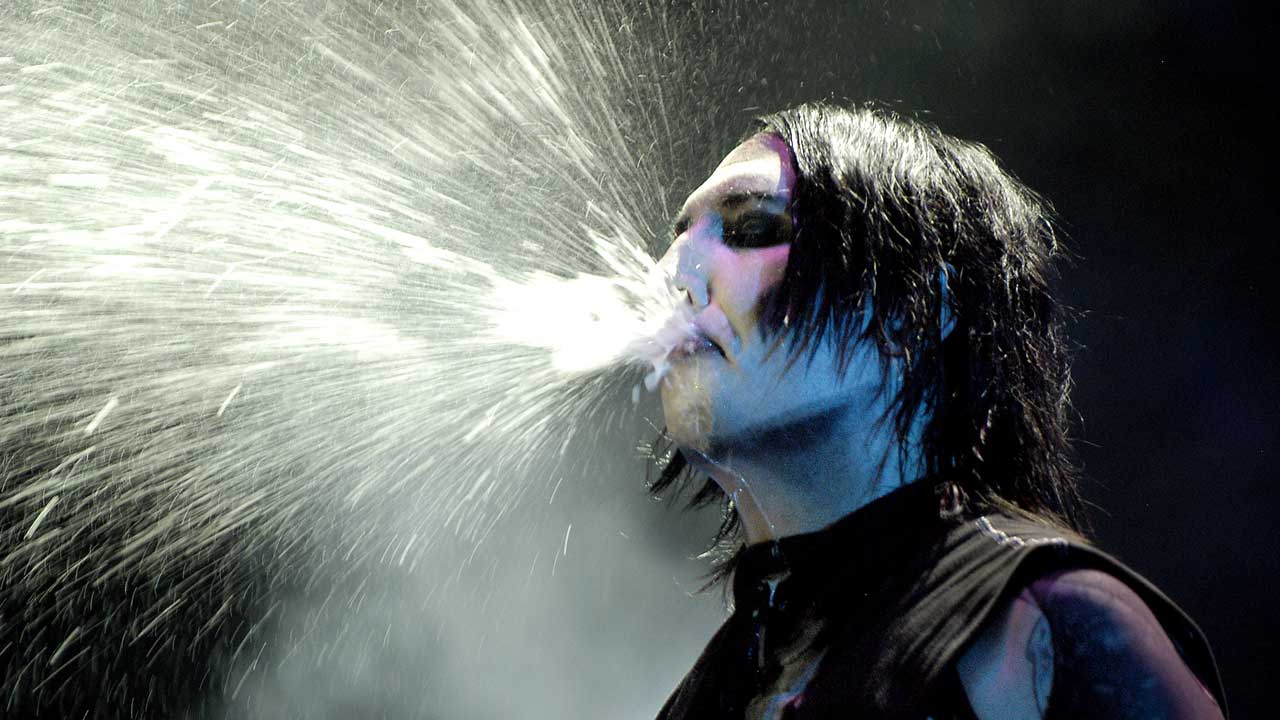It is hardly headline news that Marilyn Manson is a man who knows the value of making an impression. This is never more the case than when he meets the media. I’ve interviewed him in a pitch black hotel room.
He sat in the gloom, hunched up on a chaise-longue, wearing brown tinted aviator sunglasses just light enough for him to see me, but dark enough for his eyes to remain invisible. He sipped a tall glass of absinthe – it was lunchtime…
I’ve also interviewed him in a stark white hotel room, in which he sat with an anglepoise lamp behind him which was directed in my eyes. He was a shadow and I was blinded, his voice emerged as a low, long croak from a halo of light while he remained a black centre at its heart. It was a pretty good metaphor.
But the best place to interview him is at his house, and it comes with the biggest dose of showmanship yet.
The process starts with a long build-up throughout the day. It features several phone calls to tell you the interview is off. Then several more to tell you that it is back on. It comes with conditions as to what you can and can’t do. Then messages telling you to forget about the conditions. It’s a lot of fun.
This is worth recalling this because, though after all this time, he still knows how to sell himself.
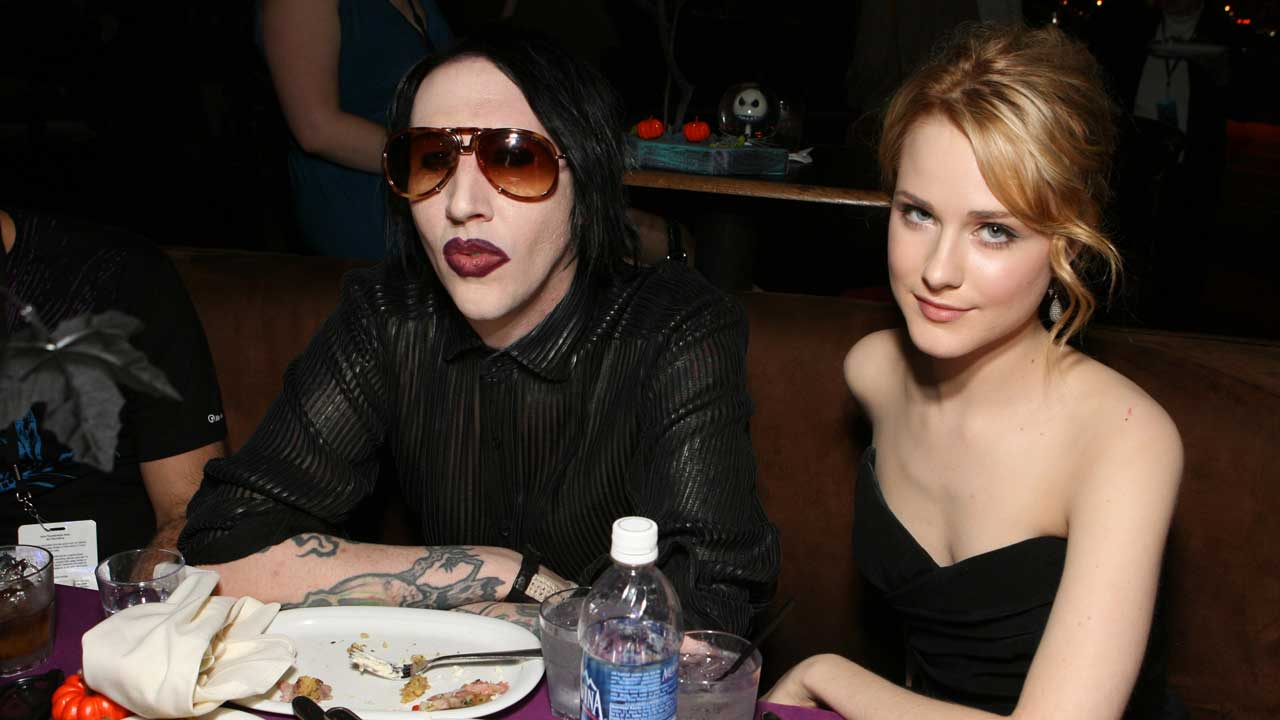
I was in Los Angeles in 2009 when Manson – as absolutely everybody calls him – invited me to his house to talk about his seventh album The High End Of Low. It is one of the most human, vulnerable albums he has ever released and concerned his then recent split with the Hollywood actress Evan Rachel Wood (pictured above, with Manson), It is also little uneven.
It was the first album he had made with his former collaborator and partner in crime Twiggy Ramirez – and the pair’s reconciliation after Twiggy’s 2002 departure from the Manson fold had led to a certain amount of debauchery behind the scenes.
Manson was bitter, depressed and lonely after his break-up with Wood, but also back in harness with his buddy. He seemed determined to block out the pain with a party and the subsequent album bounced correspondingly from feelings of “Fuck her, I’m alright on my own and with my buddies” to an infernal brooding.
I had flown to Los Angeles with the much-missed photographer Ashley Maile and we were due to spend an afternoon Chez Manson. Ashley would shoot him, then I’d interview him. Then Ashley and I would go back to the hotel and get pissed.
We got a phone call shortly before we were due to set off that afternoon – Manson is “nocturnal”, we were told. He doesn’t do interviews or shoots in the day.
Then we got another call. “The journalist cannot be present during the photo shoot”. Apparently, a journalist had stitched the singer up once by writing about what he does during a shoot – he likes to station an assistant with a full-length mirror behind the photographer so he can examine the poses he is pulling, which seems reasonable – and his vanity would not accept another dig about his vanity. Fine.
Then came another call. “Manson will direct and light the shoot himself. Tell the photographer just to bring his camera”. Less fine but a compromise was struck. First they’d do the shoot Manson’s way, then they’d do it Ashley’s way and decide what worked best. It was scheduled for 8pm. Then 9pm. Then 10pm. It finally happened at 1am and went like a dream. By 2am, with jetlag pounding, it was my turn.
Manson lived in a rented house then. It was up in the hills, up behind the Hollywood Bowl and deeper into the night. You turned off main roads onto tiny ones; then you turned off the tiny roads onto something like a steep track. It was in Los Angeles, near Hollywood but felt like a dark, country lane. A coyote or mountain lion, or something, howled. Honestly.
I walked up Manson’s garden path – even at the time, the notion of Marilyn Manson having a garden path felt ridiculous – and past the abandoned toilet that rested outside his front door, as if tossed there from a high window. It was hard to get an idea what his house was like in the dark. It seemed foreboding but was, in actual fact, a bungalow. But a big one.
His doors were vast wooden things, a haunted house of horror knocker visible in the darkness. Of course. They were opened by an assistant and, such was the artifice and act at this stage, such was the grand piece of drama that Manson must have known he had constructed for his unwitting interviewer – the dark night, long car ride, the isolation - that I wouldn’t have been surprised if the assistant’s name had turned out to be Igor. “I’m Steven,” he said. Which was disappointing.
Inside, it was dark. From the stereo, came the sound of the album – The High End Of Low – being played at a volume quiet enough to talk over, but loud enough that it could not be ignored. “Do you mind if I leave it on?” came a voice from the candlelit gloom. “Otherwise I can hear the rest of the voices in my head.”
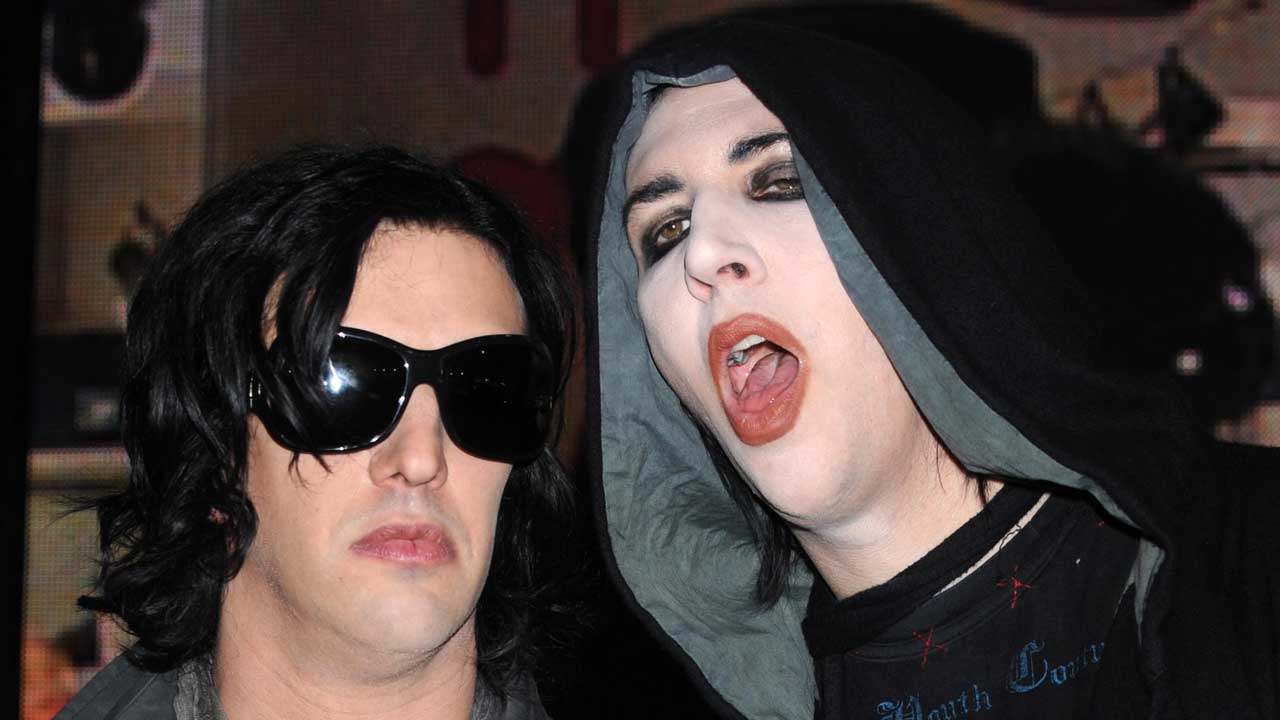
The God Of Fuck himself was dressed in black leather trousers, black t-shirt, black-hooded top, black step-heeled boots and an initially wary mood. He was draped over a sofa in a sunken portion of a large sitting room. There appeared to be fur rugs draped everywhere, though it was hard to see in the gloom.
Hanging on the wall by the door was a prosthetic leg. Above that, on the opposite wall, sat the mounted heads of two baboons, serving as gatekeepers to the living room. In one corner were two antique wheelchairs, their various straps, levers and restraints more ominous when picked out by the flickering candles that made a half-hearted effort to illuminate the place.
Along one passageway was the kitchen and from it came a steady supply of absinthe courtesy of Steven. Along another passageway was Manson’s bedroom – a room that could have doubled as the lair of a serial killer, as I later discovered.
But what was really striking about the house was the mess. I didn’t take any snaps, but believe me, it was a disgrace. A fucking tip. A diabolical chaos of books, wires, CDs, stereo equipment, wires, films, unlit lights and god knows what else. It wasn’t dirty, necessarily, and the only smell was an all pervading reek of the aniseed in the absinthe. But it was a state.
“Is it worse than you expected?” he asked. “Or just confusing? I’m aware of what people might think of the place.”
Of course he was. That’s why it looked like it did. That’s why he invited a journalist up here in the middle of the night. Why else would he allow some snooping writer into his home if not to create an impression? This was the first interview he had done for The High End Of Low and he was using it as a scene-setter for every other journalist to ask him about later down the line. It was an act.
Or was it? I could never really tell. There was every reason to believe that this was actually how he lived too. The place did not look staged, it did not look like it had been artfully arranged to look a mess. It was impossible to tell whether Manson was having me on, or whether he really lived in this nocturnal gloom, a latter Byron-esque character alone in his mess and mayhem, brooding about a lost love, clinging to his absinthe, plotting the next time he and his buddy could hit the town and fuck girls.
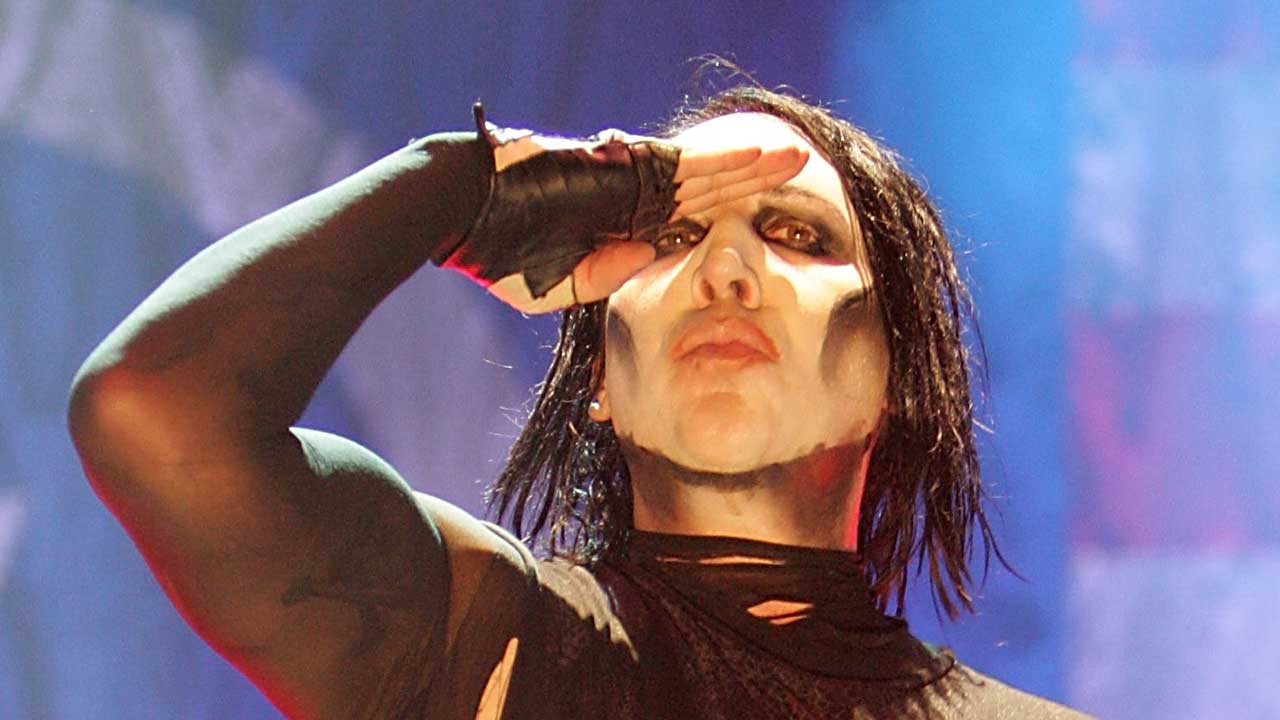
Manson talked a lot that night about fucking girls. He seemed in a particularly randy stage of his life. He was 40 then, but he talked about hitting the town with Twiggy. “We’re probably more ridiculous and reckless than we were the last time we were together. Not in a more mature way,” he said.
He was telling me this just as his cat jumped up onto my lap. Manson had slowly warmed to me: what began as wariness had become increasing openness an hour or so into the interview. But when his cat jumped on my lap, he was irritated and oddly jealous.
“She’s the one girl in my life. Although she’s kind of cheating on me now,” he said pushing her off me. “I’ve always talked to Lily as a person. She’s kind of pissed off [today]. I think she’s mad because I’ve ignored her for the last couple of days in the pursuit of other women.”
We chatted on, talking about the album about his relationship with Twiggy – “we’ve now had our non-gay but almost gay boyfriend/girlfriend reunion” – and then about his split with Wood. I asked what it was like being in a relationship with Manson.
“Oh, I’m a fucking handful,” he replied, then said later: “It’s such a big undertaking for me to be me so I understand it’s hard for someone else to be around me. Perhaps the biggest problem in my life, is that everyone assumes I’m so used to being told ‘You’re great’ that a lot of time people go out of their way not to. That can be damaging to your self-esteem.”
He talked about how, towards the end of his relationship with Wood that he became worried that he was losing his identity, that he was no longer an outsider. That fear of losing his identity, he suggested, may have been at the heart of the breakdown of his relationship.
You don’t make it easy on yourself, do you, I said.
“No!” he laughed. “No, I don’t at all. It’s always complicated.”
It was an extraordinarily candid conversation for a world famous rock star to be having with a journalist he barely knew. Increasingly, as we talked in his dark and creepy house, he emerged not as the icon of iconography his act suggested, nor the grand Antichrist Superstar, but someone very human, very humble and strangely insecure.
And then he took me in his bedroom.
Marilyn Manson’s bedroom back then was the single most diabolical room I have been into. This was the epicentre of the Manson mess, the ground zero of the anarchy of books, electrical chords, records, pictures, clothes, plastic bags, lamps, fans and who-the-fuck-knows-what-else that cloaked the carpet in chaos.
His bed appeared to be a mattress on the floor and next to it was a small lamp with a pair of remarkably obviously well-worn women’s knickers. Manson, now warm and friendly, pointed to them with a gleeful snicker.
“This room’s a pigsty, Manson,” I told him and he laughed.
“I know, I know,” he replied. “It looks like a serial killer lives here.”
He was right. Hanging from another doorway was a large plastic sheet; the sort in which you might bury a corpse.
“Yes, it is very conspicuously something you wrap bodies in,” he agreed. “When I bring people back here I have to say, ‘Honestly, I’m not going to bury you in the back yard.”
But, he said, oddly not many people have commented on the state of the place. I asked if he’d ever brought girls back here who, once they’d seen his bedroom, made their excuses and left.
“That’s kind of the history of my relationships!” he said with another gleeful chuckle. “No, surprisingly it’s oddly common when I meet someone for them to completely ignore all this. I say, ‘I swear I’m not going to kill you’ and they go, ‘No, no, that’s fine’! Maybe I’m a damage magnet? I attract damaged girls because I’m a damaged person. Those are my people. That’s the gig.”
The plastic sheeting was not the only thing that might worry a potential Manson conquest. Scrawled in a madman’s hand across all of the white walls were the singer’s deepest, darkest thoughts in black letters, sometimes a foot high.
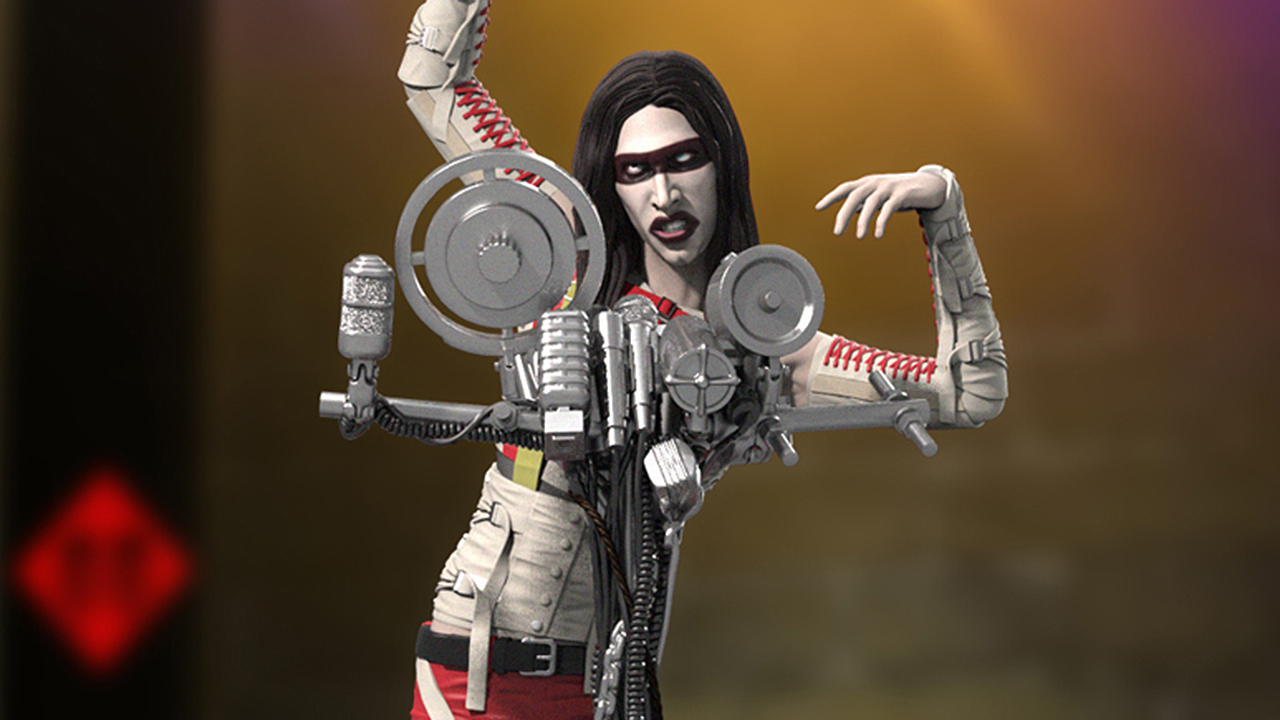
There were lyrics, ideas, abuse, drawings, scribbles and, in one case, a direction to his poor assistant to put his books on the wall. There were no shelves. There was a human jawbone, a doll and a gap in which the word ‘vacancy’ was written after, in a rage, Manson had knocked a prized frame containing a Death’s Head Hawkmoth from the wall.
“The first thing I wrote was ‘Now I really ♥ [heart] you’,” he explained, in reference to his former girlfriend Wood. “That was on a day where I thought things were good. Then, suddenly, things went bad. So I tried to correct it to ‘Now I really have to kill you’.”
Beneath that was an A3 scrap of paper on which 14 empty cocaine bags were taped.
“That’s my modern art piece, entitled Week One,” he sniggered. “That was the first week of making the record. Either we had really poor cocaine or we did a lot.”
Then he pointed to some lyrics written at the very top of the wall. “I don’t know how I got up there,” he said. “I don’t really remember.”
Seeing the mess was like being let inside his mind. And while it continued to strike me that all of this could have been staged for my benefit, there was something that rang true about it all. For one thing, he was allowing me to be incredibly nosy. I poked around his past relationships, I asked deeply personal questions, and he continued to give deeply personal answers.
“When I meet people now, especially girls, I like to compare myself to a vintage car,” he told me. “It looks really cool to drive, it’s really interesting, but it will break down a lot. I take a lot of maintenance.”
And it was that that made it all seem genuine. If it was all an act, why reveal so much? “I’m a very open about myself,” he told me before saying that the proof was the fact he had let me in his inner sanctum, his bedroom. “Because you’re sort of the enemy as a journalist.”
We talked for hours, drifting away from the album, from him and his life. We talked about Salvador Dali, Andy Warhol and Barack Obama (all three of whom he liked) and we could have gone on for hours. It was dawn by the time my energy levels had flagged to the extent that I nearly nodded off on Manson’s bed. And god knows I didn’t want to fall asleep there. I had seen the used condoms he had collected under his pillow.
He walked me to the front door, his arm around my shoulder as the sun came up across Los Angeles. And as the light crept in on the place, suddenly Manson’s house didn’t seem quite so strange after all.
Despite the mess, the scrawlings on the wall and the baboons’ heads by the door, it all felt quite cosy. He too, had changed. He had gone from being the iconic star to someone who had just wanted a friend for a night – that evening it happened to be me. Who knows who it would be the following night.
“I feel like I should hug you after all of that,” he said just before I left. And so he did, grinning from ear-to-ear. Then he told me to watch out for the toilet on his pathway and disappeared back inside.
